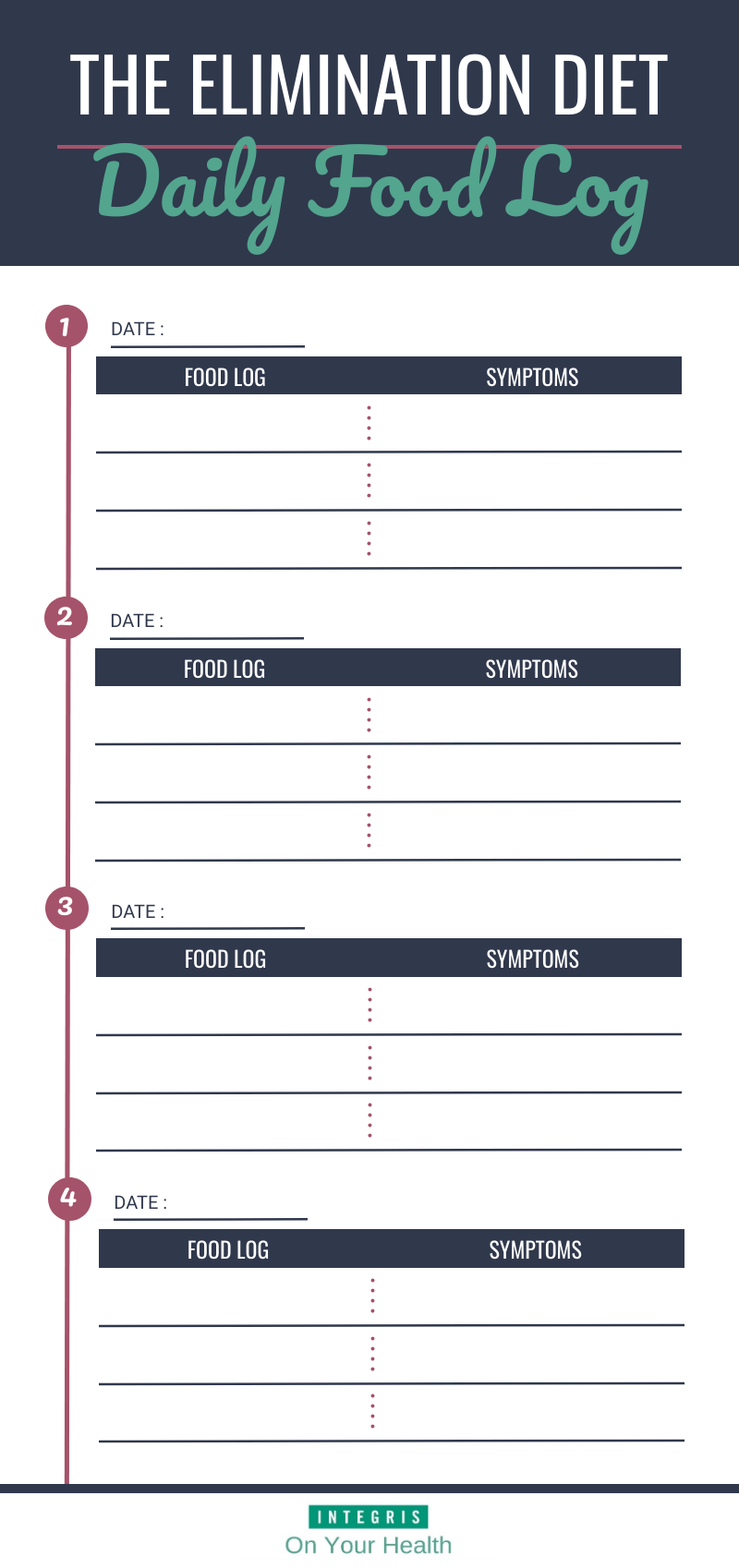How to Do an Elimination Diet
Posted in

Up to 20 percent of people suffer from food sensitivities, intolerance or allergies, which can lead to symptoms ranging in severity from indigestion to anaphylaxis. People who have severe allergies are often aware of their allergens due to the severity of their reaction. However, many people with food sensitivities aren’t aware that their diet could be causing mild daily symptoms such as indigestion, pain or discomfort.
Diagnosing food sensitivities and intolerance
A food sensitivity is an adverse physical response to a certain food, which can result in digestive problems such as abdominal pain, bloating and gas.
With a food intolerance, the individual lacks the enzymes needed to break down and absorb certain ingredients, which can lead to gas, bloating, nausea and intestinal pain.
A food allergy is the most serious of the three conditions and occurs when the body mistakes a food ingredient as harmful and defends itself by producing high levels of immunoglobulin E (IgE). Food allergies can be life-threatening and often result in hives, swelling and shortness of breath.
There are two key ways to diagnose food sensitivities, intolerance and allergies. It’s important that all methods of diagnosis are conducted under the supervision of a doctor or registered dietitian.
The first method is a skin prick test, which measures the presence of IgE antibodies for a potential allergen. A skin prick test is conducted at your doctor’s office and produces immediate results. However, about 50-60 percent of tests result in false positives, meaning you may not be allergic to a food even if it comes back positive on a food prick test.
The elimination diet is the gold standard for diagnosing food sensitivity and intolerance. This method takes approximately five to six weeks and works by carefully tracking your symptoms as you eliminate common allergens from your diet for a minimum of 21 days. You will then reintroduce those foods one by one.
An elimination diet can help link specific foods to symptoms such as indigestion, skin problems, inflammation, mood swings, fatigue and pain.
How the elimination diet works
The first phase of the elimination diet is the elimination phase, which lasts for approximately two to three weeks. This is when you eliminate all suspect foods from your diet.
If you have a strong sense of which foods could be giving you problems, you can choose to eliminate only those foods. Otherwise, you can eliminate the most common allergens, including nuts, corn, soy, dairy, citrus fruits, nightshade vegetables, gluten, eggs and seafood.
It’s important that you consistently eliminate these foods from your diet for two to three weeks. During this time, carefully track your symptoms to see if they resolve or recede over time.
After three weeks, you can enter into phase two of your elimination diet: reintroduction. This is when you reintroduce eliminated foods back into your diet.
Each food should be reintroduced individually over a three-day period, while carefully tracking your symptoms. Watch for skin irritation, pain, fatigue, difficulty sleeping, indigestion or bloating. If a food sparks symptoms, this indicates you may have a sensitivity or intolerance to that food.
Benefits of logging your food
Logging your food and symptoms are crucial to the success of an elimination diet. Doing so will allow you and your doctor to analyze your symptoms and discern which foods correlate with signs of sensitivity, intolerance or allergy.
When logging your food and symptoms, be as specific as possible. Include the ingredients of your food, any possible cross-contamination, and how much you ate. Be specific about your symptoms as well, including the severity and duration of your symptoms.
Using a daily food log makes it easier to keep track of your elimination diet. If you are doing an elimination diet to diagnose possible food sensitivities, use the template provided below to track your food intake and symptoms.
To download a pdf click here.
Remember to conduct an elimination diet under the guidance and supervision of a doctor or registered dietitian. If you or a loved one are experiencing symptoms of a food sensitivity, intolerance or allergy, schedule an appointment with an INTEGRIS allergy specialist or immunologist today.




